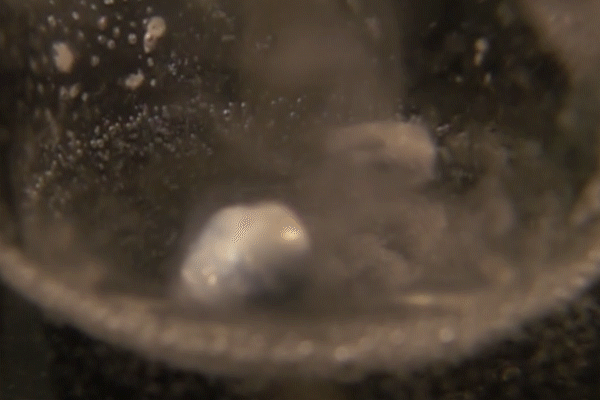Reaction mechanisms – Page 7
-
 Research
ResearchTamed sodium in water comes out of the blue
Controlled conditions prevent alkali metal in water exploding letting researchers film and examine reaction with new eyes
-
 Research
ResearchAFM study could prompt surface catalysis rethink
Intermediates predicted by theory don’t match those seen under the microscope
-
 Research
ResearchElusive Suzuki intermediates finally captured
Backing for model that ‘jumped straight into textbooks’ without any experimental evidence
-
 Research
ResearchChemical reaction flipped back and forth under scanning probe microscope
Work demonstrated on Bergman cyclisation offers route to valuable new reactions
-
 Research
ResearchCobalt could cut costs for pharma ingredients
Carboxylic acids and esters hydrogenated without the need for expensive precious metals
-
 Research
ResearchPhotoredox catalysis mechanisms seen in new light
Luminescence quenching and quantum yield measurements prove light/dark experiments don’t always get it right
-
 Research
ResearchFluorescent protein spectrum shunted by single hydrogen bond
Be aware – subtle changes can drastically influence the luminescent properties of biological chromophores
-
Research
Ultra-bright x-rays film molecular reaction
‘Molecular movie’ provides new insight into classic ring-opening reaction
-
 Research
ResearchPhoto-catalysts shine light on chemical bond making
Femtosecond laser pulse used to control the formation of magnesium dimers
-
 Research
ResearchCopper click chemistry mechanism unravelled
Highly stable intermediates fundamental to favoured catalytic pathway
-

-
 Research
ResearchRadical observation lights up combustion
First sight of hydroperoxyalkyl radical provides reaction kinetics data that will contribute to engine design
-
 Opinion
OpinionDeath of a reagent
Fashion and progress combine to mean some reactions and reagents persist, while others fall by the wayside, says Derek Lowe
-
 Research
ResearchCarbon–carbon couplings go 3D
Reaction extends 2010 Nobel prize winning Suzuki coupling and can be used to modify natural products
-
 Feature
FeatureOrganic pioneer
Christopher Ingold's insights into mechanism and reactivity established many of the principles of organic chemistry. John Ridd reveals more about his life and work
-
 Feature
FeatureThree share prize for metathesis work
The discoveries made by this year's Nobel laureates have had a great impact on new drug developments, polymeric materials and industrial syntheses. Karen Harries-Rees reports.